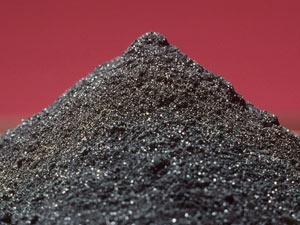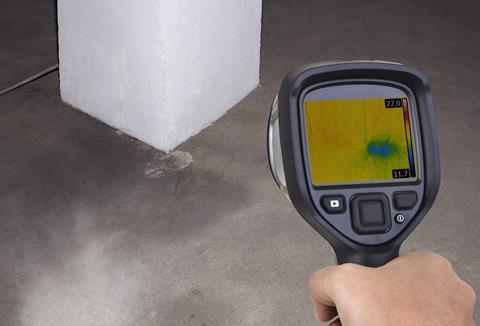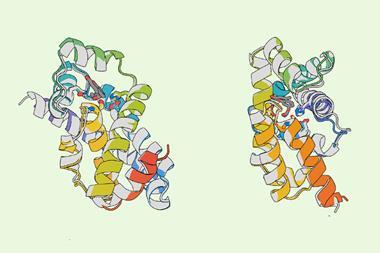Meera Senthilingam
This week, a franchise of compounds, and Brian Clegg is seeking out its stars.
Brian Clegg
Vanadium, the transition metal at number 23 on the periodic table, is one of those elements that sounds more like something out of a superhero movie than a real substance. You might expect that vanadium oxide would be of vanishingly small interest, but the reality is different. I should really have said the vanadium oxides, because thanks to vanadium’s five valence electrons there are enough oxides to sound like a successful Hollywood franchise – vanadium (II) oxide, VO, vanadium (III) oxide, V2O3, vanadium (IV) oxide, VO2 and vanadium (V) oxide, V2O5, without going into extra intermediate phases that can produce entertaining combos like V6O13 and V8O15.

Also like those Hollywood franchises, some instalments are more interesting than others, and here it is the vanadium (IV) and (V) oxides that are potential Oscar winners. Of the two, vanadium (V) oxide, or vanadium pentoxide, takes the supporting role. It has striking looks, though, with a strong red-orange shade when in a hydrous form, though the anhydrous powder is a dirty yellow.
Vanadium pentoxide does have small scale direct use in ultra-high capacity vanadium redox batteries used for storage at grid levels. These bulky devices aren’t suitable for domestic use, but on a large scale have a number of active, if experimental, installations. The batteries make use of the flexibility of vanadium, changing the oxidation states of two separate electrolytes to produce a flow of electrons. To add to their flexibility, these batteries can be recharged pretty well instantly by replacing the electrolytes, if required.
However, the oxide comes into its own as a catalyst in the production of sulfuric acid, where it facilitates the reaction of sulfur dioxide with oxygen to form sulfur trioxide. In principle water could then be added, but in practice the reaction is so energetic that the sulfur trioxide has to be dissolved in concentrated sulfuric acid. The vanadium oxide itself is largely mined in China, South Africa and Russia, usually starting with a mixed ore that is treated with sodium carbonate and, ironically, sulfuric acid.
Vanadium (IV) oxide, confusingly known as both vanadium dioxide and vanadium tetroxide, can also be produced from the pentoxide, which is reacted with vanadium (III) oxide, also derived from the pentoxide. This is a substance that undergoes a remarkable, if subtle, change as it is heated, with the potential for impressive applications. At around 68 degrees Celsius the oxide changes structural form as bonds between vanadium atoms are broken. The result is that electrons that were tied up in the bonds become available, so the electrical conductivity of the material shoots up. It has been suggested that this switch can be made use of on the scale of a handful of atoms to produce new, more compact electronic data storage mechanisms, though as yet this development is largely theoretical.
The vanadium oxide dynasty knows how to put on a show
Another possible nanoscale application is to produce tiny actuators. When the oxide goes through its transition, the compound changes shape, expanding in two dimensions while contracting in the third. Although the movement is extremely small, it is enough to act as a miniature actuator, and can be triggered by heat, an electrical current or even a laser, making it a versatile addition to the toolkit of those attempting to construct nanobots.
However, there is another implication of the temperature-based transition that has already been lined up for a wide range of applications. As well as changes in shape and conductivity (and magnetic susceptibility), the oxide goes from being pretty much infrared transparent to being a reflector – or, coated on sapphire, it can become a near-perfect absorber. This process occurs extremely quickly, potentially switching mode in less than a trillionth of a second. This seems a natural for high speed shutters in infrared cameras, and is likely to prove valuable in the expanding field of photonics, where the switching of light replaces electronic transistors.

The temperature at which the phase transition occurs can be changed by doping the material with tungsten, which means that it is also possible that the material could be used as an otherwise transparent infrared reflector to enhance the heat insulation properties of windows. The phase change can be triggered electrically, producing an infrared ‘smart glass’ that can be switched from transparent to reflective depending on the weather. And the temperature effect can even be turned on its head. Vanadium oxide, like all materials, gives off electromagnetic radiation that can be picked up by infrared cameras. But when it hits the transition point, it suddenly drops in emissions, making it seem significantly cooler than it actually is, giving it the potential to conceal a target from the infra-red gun sights of an aggressor.
Vanadium (IV) oxide is the exotic superstar of the bunch, while vanadium (V) oxide, with its role in ferrovanadium and sulfuric acid production is the heavyweight. Between them they show that the vanadium oxide dynasty knows how to put on a show.
Meera Senthilingam
Science writer Brian Clegg with the show-stopping chemistry of vanadium oxide. Next week, the drama continues.
Simon Cotton
When chemists spot a nitro- compound, they know there is a good chance that it will be explosive.
Meera Senthilingam
Simon Cotton explains this insider knowledge in next week’s Chemistry in its Element. Until then, thank you for listening, I’m Meera Senthilingam.













No comments yet